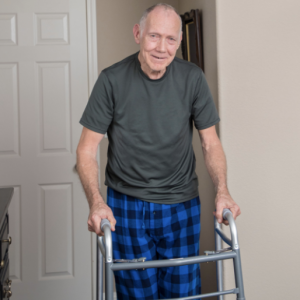Pave The Way: Adaptive Products That Allow You To Age In Place

Pave The Way: Adaptive Products That Allow You To Age In Place
April 28, 2021
It’s a truism we’ve addressed many times: most of us would prefer to “age in place” as we get older. We want to stay in a familiar environment, among the people and places we love, rather than move to a facility. But for many, physical impairment may accompany aging, so that beloved homes may not be well-suited to new physical limitations. There may come a point where you simply cannot sit down on your toilet or climb stairs at bedtime or walk around the neighborhood to purchase essential items. Does that mean moving to a facility is then inevitable? Not at all, if you understand and implement the necessary changes and adaptations that can allow you to capably and comfortably continue daily life in your home.
A recent article by columnist Paula Span from The New Old Age column of the New York Times underscores this point. Span highlighted a new study published in JAMA Internal Medicine that determined that about 12 million Americans 65 and older living at home could use equipment to help with bathing and toileting, but about 5 million of them live without this help and thus put themselves at risk of falling or enduring a poor quality of life. While some equipment, such as bath chairs or walkers are considered Durable Medical Equipment and thus are paid for by Medicare, other items, such as grab bars to allow you to safely transfer, are considered items of “comfort” or “convenience” and therefore not covered- even though the cost of these items is low, and the savings in safety and dollars spent by Medicare and Medicaid could be significant if falls are prevented. For further understanding of what counts as Durable Medical Equipment and what Medicare will cover (and where you may obtain it), slowly grab hold and click here and here. And for more insights on accessing durable medical equipment, especially if not covered by Medicare, click here. And read here to find out about ways to pay for such equipment for your home.
For some, it’s hard to figure out exactly what you might need, and what products in the marketplace could help you keep or gain independence while remaining at home. In a commentary responding to the previously mentioned JAMA study, Dr. Brian McGarry suggests that primary care physicians ought to screen for impairments and limitations when they see older adults in their offices and alert these patients to available adaptive devices and technologies that can keep them safe and functional. As Dr. Kenneth Lam, the lead author of the JAMA study stated, “I believe most older patients walk out of PCP (primary care physician) appointments thinking about aspirin and vitamin D and not about how they might change up their home for the sake of their health and wellbeing. I believe a visit focused on addressing these issues would be better than time spent discussing more pills.” For a general understanding of what parts of your home pose risk and what home renovations may be necessary (along with new equipment or adaptive devices), check out this CDC safety checklist. For ideas about specific items that might truly elevate your quality of home life, consider this general review of assistive technologies to help older adults as well as this recent review of adaptive devices from Senior Matters. Of course, as we’ve previously mentioned in agebuzz, there are specialists who are certified in “aging-in-place” design, as well as occupational therapists, who can go room to room with you to determine how your needs, or those of a loved one, can be met. Finally, for those of you in search of some design flair to accompany your practical concerns, rest assured there are companies that manufacture the most elegant grab bars and shower seats you can imagine. For some ideas, pull out your Elle Decor and click here.







